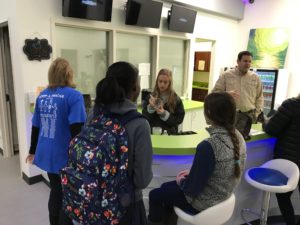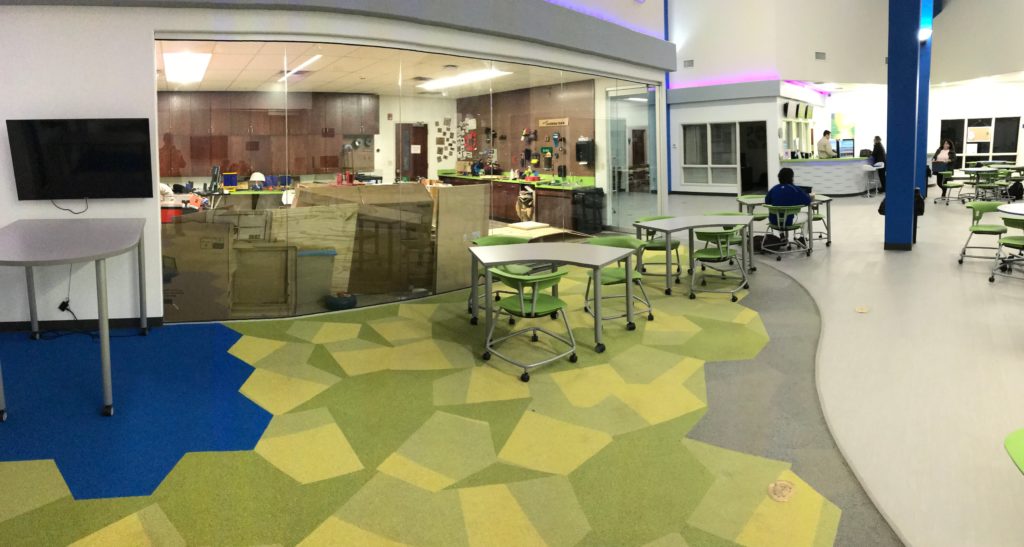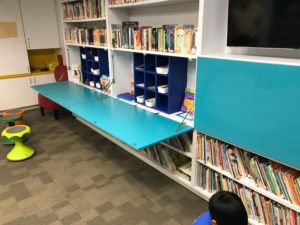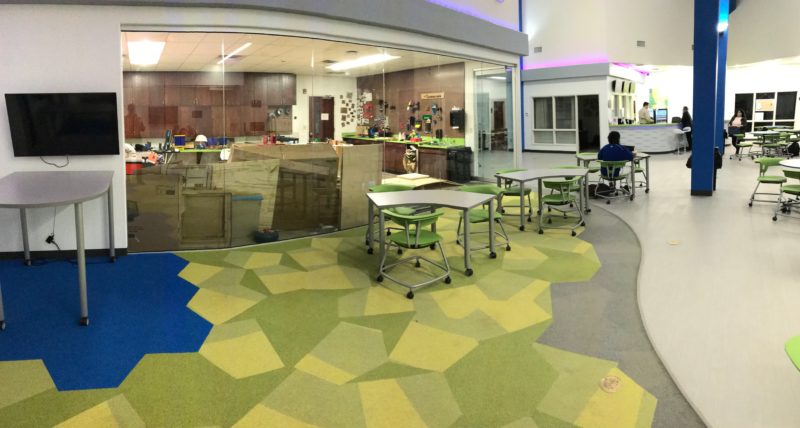Four years ago when I published #EdJourney, I posited that significant changes at individual schools might take place over a period of 3-15 years, depending on leadership, intentionality, and focus. I have really never seen an example of significant change (other than in schools where a wolf is at the door) in the first year of a new principal or head of school. New leaders almost always use that first year to listen and learn the culture of the school, which is not only good, but very much in line with what we see as the successful “architect-leader”. Until now.
All Saints Episcopal School is a pre-K-12 independent school in Tyler, a small east Texas city which one might not normally think of as a hotbed of innovative progressivism. Yet what I saw in my day there last week strongly suggests that the right leader with the right skills can spark significant school change in even that first year of a leadership transition. I have visited a lot of schools in the last five years; All Saints is a positive outlier in the rate of school change which other school leaders might do well to study.
Mike Cobb came on as head of school a year and a half ago. In that time, here are just a few of the artifacts of a significant shift to deeper learning that I found:
 By retrofitting a little-used board room and some common space, the school has created one of the best multi-room, multi-purpose, flexible innovation centers I have seen at a K-12 school. It includes a makerspace with a full window wall into the commons area (the maker space had been the board room), a Google-like meeting area, and, the highlight, a student-designed, student-operated eCafe bar, where students and faculty can buy a hot drink during the day. The students I interviewed who operate the business are part of Jason Kern’s entrepreneurialism course of study. Their reach and grasp of the complexities of creating and running an actual business were impressive; when the visited the business school at the University of Oklahoma, a professor was shocked that what they knew and had accomplished was beyond what he would expect from upper division college students.
By retrofitting a little-used board room and some common space, the school has created one of the best multi-room, multi-purpose, flexible innovation centers I have seen at a K-12 school. It includes a makerspace with a full window wall into the commons area (the maker space had been the board room), a Google-like meeting area, and, the highlight, a student-designed, student-operated eCafe bar, where students and faculty can buy a hot drink during the day. The students I interviewed who operate the business are part of Jason Kern’s entrepreneurialism course of study. Their reach and grasp of the complexities of creating and running an actual business were impressive; when the visited the business school at the University of Oklahoma, a professor was shocked that what they knew and had accomplished was beyond what he would expect from upper division college students.

- Part of the innovation center complex is a virtual reality studio that was built and is operated by students. Mike gave them a budget of just $2,000, out of which they built their own computer and added the headsets and controllers. The students staff the studio to teach other students, including elementary age, and work with teachers on how VR can be incorporated in their classrooms and curricula.
- Every last Friday of the month is dedicated to faculty professional development, a variation on “20% time”. Teachers are expected to grow, share, connect beyond the school, present at local and national conferences. Most importantly, their own growth plans and evaluations are tied to portraits of graduates and learning that more deeply outline the school’s mission statement. (When I visited on Friday, I met with the faculty in the afternoon, but had nearly two hours in the morning to convene the entire student body of grades 5-12. What a treat! 375+ students freed to ask questions about their own learning experience, the nature of what “community” means to students, and then work in multi-grade teams to prototype ideas to maximize student engagement and intrinsic motivation.)

- Many schools create gardens, only to find that teachers don’t embed gardening into their syllabus, and students don’t want to do the actual dirty work of growing food. On a bare patch of ground, All Saints elementary students and teachers have created an impressive working food garden. Just as John Dewey urged us to get our hands dirty in our learning, the youngest kids are responsible for the chickens, from which they gather eggs to sell in the car pool line every two weeks. The middle and older elementary school students, according to Mike, spend on average about 35 minutes a week in the garden, planting, weeding, cultivating, and harvesting food, which they then sell, after market price negotiations, to their cafeteria food services.
 And, I loved the changes in the elementary school library, with creative use of walls, cupboards, horizontal and vertical working surfaces, and fun, playful furniture. Some of the bookshelves reach to the ceiling, which seemed odd for a place for little students, until Mike explained that this is a cycling mechanism: books that are not used by the students will, each year, move higher up in the shelves, with the top shelf books being cycled out of the system each year.
And, I loved the changes in the elementary school library, with creative use of walls, cupboards, horizontal and vertical working surfaces, and fun, playful furniture. Some of the bookshelves reach to the ceiling, which seemed odd for a place for little students, until Mike explained that this is a cycling mechanism: books that are not used by the students will, each year, move higher up in the shelves, with the top shelf books being cycled out of the system each year.
The speed with which Mike and his team have made these physical and programmatic changes is remarkable, and I found little evidence amongst the faculty of the widespread fear of change that paralyzes many schools. Maybe they were just being nice to a visitor, but I don’t think so.
My big takeaway from this visit was that effective school leader combine listening and action. These can happen in parallel, not in sequence. Has All Saint’s tackled some of the big, hairy problems of the school operating system yet? No. Will they have push back from parents who worry about college admissions for students who might spend more time running a business in high school than in taking more AP courses? Of course. And they will find their point of balance, as all good schools do. But what is so impressive about All Saints, and what should be the takeaway for other school leaders is that real transformation does not have to take a decade, and it can start now, not a few years down the road.











Leave A Comment